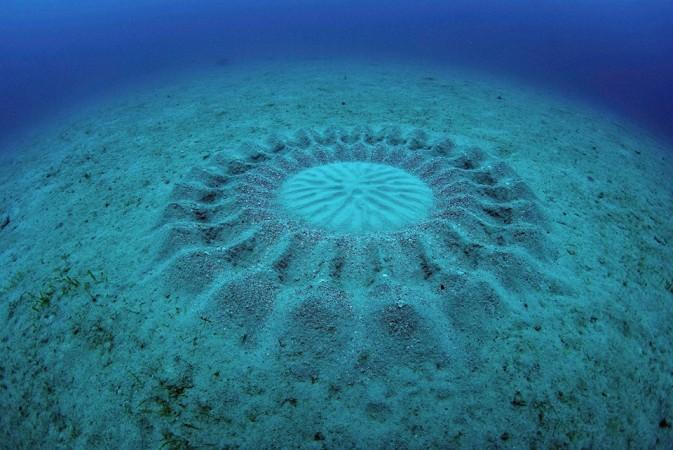
Males can go to any extent for attracting their love interest, but this little guy goes a bit too far! The Japanese puffer fish goes to the next level for attracting his soul mate. It creates an intricate design on the sea bed and takes pains to make sure that the amazing sand-art is perfect in detail.
ALSO READ: Pubic hair grooming: Top things to know
It's hard to believe this small creature can actually create a masterpiece using just its fins to attract a mate. The males belonging to this species of fish work continuously for 24 hours for a week to create this stunning piece of art for attracting their mates.

If the Japanese puffer fish stops working on his magnificent piece of work, there are chances that his piece of art might get rubbished by strong waves. It cleans the entire region where it plans to create its magnificent art work and even decorates its art work using shells etc.
Watch the video to see for yourself:
There are other marine creatures that have bizarre sex rituals too, an octopus species known as Argonaut is one of them. The maximum size a male octopus attains is around the size of a football.
This octopus uses its strongest tentacle known as hectocotylus for protecting itself and also for passing its sperm packets to the female octopus while it copulates with its female counterpart.

The male octopus sweeps past the female octopus once the mating process commences. The arm of the octopus gets detached and crawls into the mantle cavity of the female octopus.
ALSO READ: Strict diet doesn't result in weight loss: Here's why
The male octopus dies as the soon after copulating. The males of these species copulate just once in their lives and this has been going on over millions of years.
"If we call unusual deep sea animals monsters or demons or freaks, then we may harm their conservation as people are unlikely to connect with them or care about saving them," according to the opinions of the experts as reported by the Conversation.
Not much is known about the sex rituals of marine creatures as they are present way too deep inside the oceans.

















